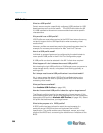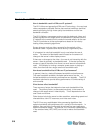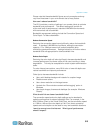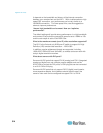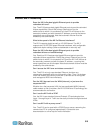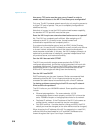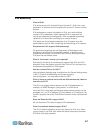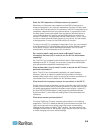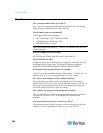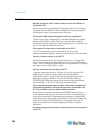
Appendix D: FAQs
315
Ethernet and IP Networking
Does the KX II offer dual gigabit Ethernet ports to provide
redundant fail-over?
Yes. The KX II features dual gigabit Ethernet ports to provide redundant
failover capabilities. Should the primary Ethernet port (or the
switch/router to which it is connected) fail, the KX II will failover to the
secondary network port with the same IP address, ensuring that server
operations are not disrupted. Note that automatic failover must be
enabled by the administrator.
What is the speed of the KX II's Ethernet interfaces?
The KX II supports gigabit as well as 10/100 Ethernet. The KX II
supports two 10/100/1000 speed Ethernet interfaces, with configurable
speed and duplex settings (either autodetected or manually set).
Does the KX II offer dual gigabit Ethernet ports to provide
redundant failover or load balancing?
Yes. Dominion KX II features dual gigabit Ethernet ports to provide
redundant failover capabilities. Should the primary Ethernet port (or the
switch/router to which it is connected) fail, Dominion KX II will failover to
the secondary network port with the same IP address – ensuring that
server operations are not disrupted. Note that automatic failover must be
enabled by the administrator.
Can I access the KX II over a wireless connection?
Yes. The KX II not only uses standard Ethernet, but also very
conservative bandwidth with very high quality video. Thus, if a wireless
client has network connectivity to the KX II, servers can be configured
and managed at BIOS-level wirelessly.
Can the KX II be used over the WAN (Internet), or just over the
corporate LAN?
Whether via a fast corporate LAN, the less predictable WAN (Internet),
cable modem or dial-up modem, the KX II's KVM-over-IP technology can
accommodate the connection.
Can I use the KX II with a VPN?
Yes, the KX II uses standard Internet Protocol (IP) technologies from
Layer 1 through Layer 4. Traffic can be easily tunneled through standard
VPNs.
Can I use KX II with a proxy server?
Yes. The KX II can be used with a SOCKS proxy server, assuming the
remote client PC is configured appropriately. Contact the user
documentation or online help for more information.




